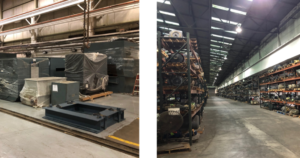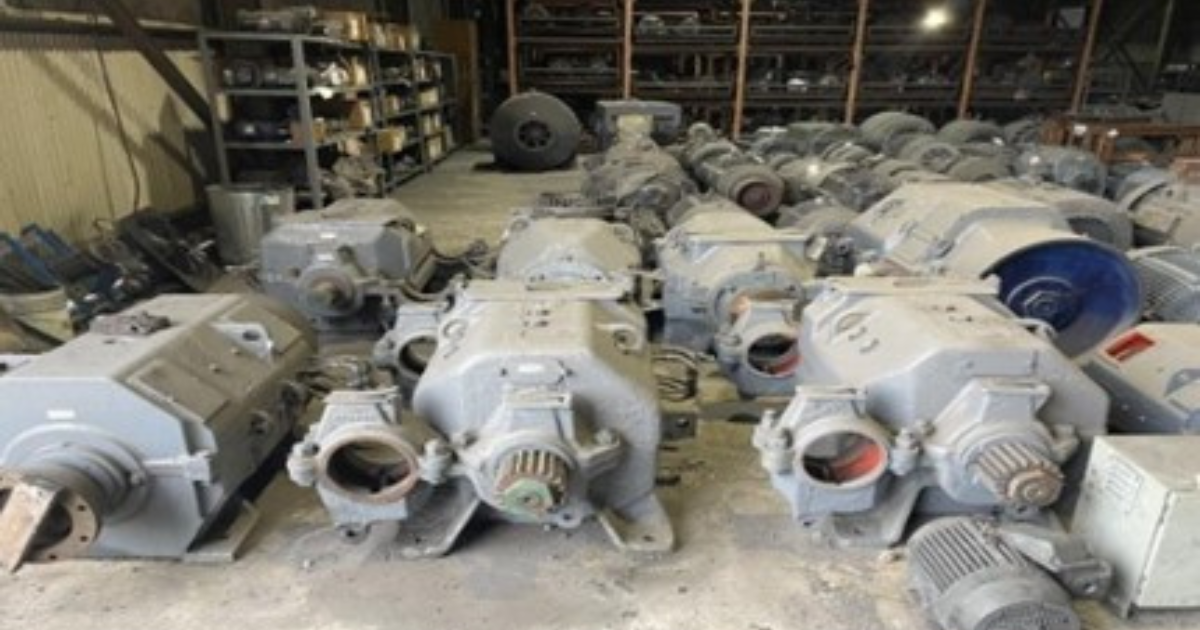Holistic Equipment Maintenance & Management, Part 2 – Turning Anomalies into Action - HECO
July 26, 2023
Building upon the “Are You and Your Assets Prepared” information provided by HECO Director of Reliability and Senior Reliability Engineer for HECO’s Predictive Service Group Jason Spettel’s insights in this first part of this series, we now turn to insights from HECO’s Vice President and CEO-Emeritus Mark Hatfield.
In a perfect world, every electric motor system is fully operational 100% of the time. At HECO, we know that isn’t realistic, so we create holistic equipment maintenance and management systems to step in when an ideal world gets real!
We’ll summarize how to turn anomalies into action in six holistic steps.
1) Know What You Have
Do you really know what you have in your plant? When was the last time you went out and identified, surveyed, and tagged everything in your plant?
Knowing what you have to start with sets the foundation for a holistic approach, especially in light of long lead times or special, hard-to-find machine configurations.
“Knowing what is special about your system and having information that is accurate and easily accessible in a database, can help develop an out-of-the-box solution more quickly,” Hatfield said.
TracRat Software developed by HECO can help and goes beyond a spreadsheet saved on someone’s laptop or a paper log.
“It tracks any Repairs that come into one of our facilities including any historical data that we have on that Repair, all the paperwork, cause of failure, and findings,” Hatfield said. “You can look up information on that asset in seconds from your phone or computer anywhere, at any time,” he said.
2) Know What You Have on Hand
Spare motors, pumps, and other equipment can help bridge the gap between a temporary failure and a longer system shutdown.
“It can take days, weeks, months, or even years to Repair or replace a unit given the current supply chain problems,” Hatfield said. “If you’re looking for a new replacement, we’ve received quotes as long as two years.”
Justifying a rush repair and/or stocking spares makes sense when you look at the cost per day to be down, Hatfield said.
To determine how many spare motors are needed for your operation, HECO and TracRat can help determine the appropriate number of spares needed based on the criticality of various systems, their repair records, and the likelihood of needing replacement.
“Believe it or not, you can have too many spares,” Hatfield added.
Many years ago, a steel processing plant with three large complexes partnered with HECO for holistic maintenance and an inventory of their assets.
“During an 18-month process, we physically identified and tagged 33,867 motors,” Hatfield said. “Of those motors, 11,286 were spares and we discovered that nearly 5,000 of the spare motors no longer had an in-service match.”
HECO reduced the company’s spare motor inventory to 6,412 motors. This 43% reduction equated to $14,263,900 in inventory.
“Overall, we saved them $1,854,307 a year in inventory carrying costs,” Hatfield said.
Knowing what you have on hand means making sure you have what, and only what, you need as production changes and upgrades, rather than keeping a spare for a motor you no longer have.
3) Specify Your Standards & Specifications
There are many ways to Repair an issue and many different options to replace a motor. Consider what standard is acceptable to you and your operation. If you don’t or are not clear with your vendor, you may end up getting whatever they want to sell you.
“Having your Repair specifications on hand will help you determine your own standards,” Hatfield said.
“Without specifications, you’re depending on whoever is doing the Repair to set the standard and do a good job for you,” Hatfield said. “There’s also no way to perform an apples-to-apples comparison without specifications.”
To get the best results, assemble your own specifications and develop your desired standards. This may mean asking yourself if what the vendor wants to do is the best long-term option for your system and operation.
While short-term or less-expensive options seem like a good deal up front, they might end up costing you more than 10 times the investment over the lifespan of the equipment. Inversely, going with a vendor that costs 20% more may seem excessive until you realize that they can make the repair or replacement last for 15 years.
“Sometimes HECO is asked to fix something quickly, but not necessarily correct for the long run,” Hatfield said. “In those cases, we have to put pixie dust on it and make it work, but we also put a plan in place to fix it correctly when they have their next shutdown planned or when a more appropriate spare arrives.”
4) Partner with Approved Vendors
Once you have specifications in place, you can start the process of approving vendors.
“That process,” Hatfield said, “involves visiting vendors, getting to know contacts beyond their sales team, developing a way to audit their work relative to your specifications, and requiring standardized forms or documentation.”
“We’ve found that building a relationship is important,” Hatfield said. “That means knowing the person you have contact with as well as the people who have contact with your equipment when you send it out for Repair.”
“HECO utilizes its own internal documentation but also completes and validates findings using an exception report to address specific points of concern or reporting that customers may require, meaning we follow our internal standards and pay attention to areas that the customer feels are important as well,” Hatfield said.
5) Properly Store & Maintain Spares
Consider the images below. Which would you prefer to pull your spare from?


Having a well-repaired or brand-new spare isn’t enough for a successful, holistic approach. To be effective, spares must be properly managed when in storage.
Adhering to Predictive maintenance requirements while in “spare” status will ensure that your motor can be easily swapped out.
Actions and the recommended timing include:
- Spinning the shafts at least quarterly.
- Turning on the motor’s heaters, if available, when being stored outside of a temperature-controlled warehouse.
- Performing an insulation resistance to ground test according to the Megger and/or polarization index at least twice a year on each motor and recording the results.
Whenever possible, store spares in a heated, clean, and dry environment that is free of rodents and contaminants.
6) Monitor Tracking & Trending Data
Knowing about the spare you are going to utilize is as important as getting to the bottom of why it was needed in the first place.
“Many years ago, we worked with a customer on a motor management program. They had a motor guru. He was really good at what he was doing,” Hatfield said.
“He had five filing cabinets in his office with every application report and history. He could locate whatever you needed in seconds, but when he passed away, they went into his office and threw all that stuff away.”
In addition to tracking relevant info, be sure you are storing the information itself somewhere where it can be easily accessed by everyone that needs it.
“We all get better by sharing information, so we can start looking at what is happening,” Hatfield said.
All Systems Go
Whatever approach to maintenance you’re currently taking, HECO has the experience, insight, and technology to assist you in developing a more holistic Equipment Management System and becoming more prepared.
Contact us to discuss your current approach and how we can help take it to the next level.
The complete Holistic Maintenance & Management series includes:
Posted in Equipment Management, Repair
